
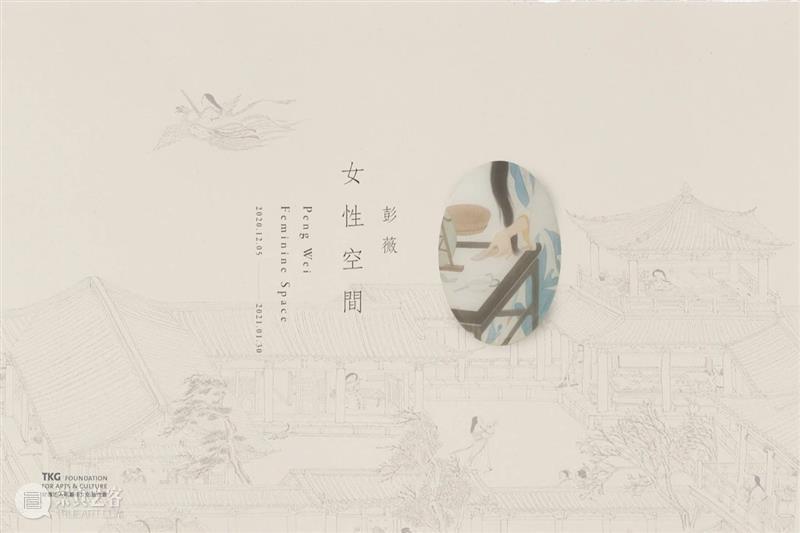
彭薇:女性空间
展期 │ 2020.12.05 – 2021.01.30
开幕 │ 2020.12.05 (六) 下午4:30
地点 │ 耿画廊 (台北市11492内湖区瑞光路548巷15号地下一楼)
彭薇作为中国代表性的当代艺术创作者,过往的作品从描绘山石,以东方材料绘制西方面孔,一直到图鉴式的鞋履衣袈,总带给观众不少惊奇。藉由笔韵墨色渗入纸麻棉绢纤维的表达,似乎在当代语汇之外,亦紧紧连结着千百年来隽永深刻的传统精神。其中更不乏艺术家对自身文化的审视与思考,透过中国传统文本的阅读,近几年的思考更多围绕着「女性」展开,并与自身性别、文化相互辩证。
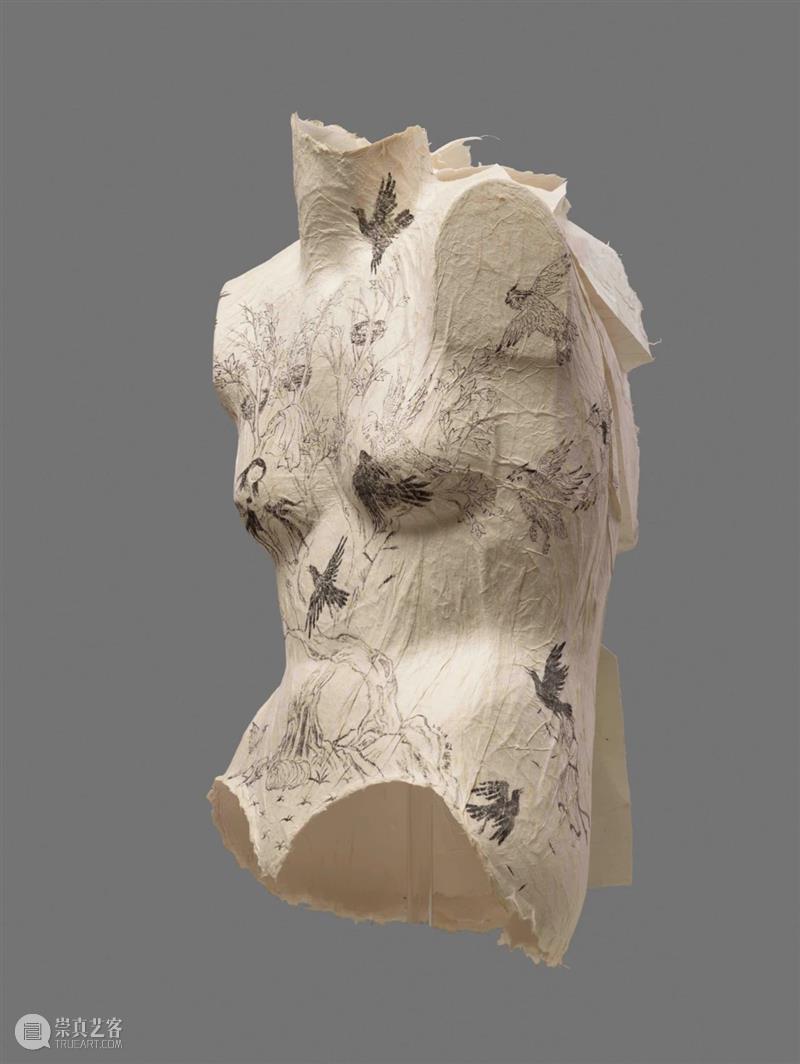
彭薇 Peng Wei|Hi-Ne-Ni VII|2019 | 水墨.麻纸 Ink on flax paper|68 x 38 x 36 cm
彭薇观察到在不同文本之中,女性形象带给她的陌生感受,强烈冲击着她对女性的认知。夹带着惊诧、不解、困惑,无论是吕坤《闺范》一书中对于女性楷模的描写,或是来自相异经典中的女鬼(或具女性形象之精怪)。彭薇以自身女性的角度,凝视着、审视着这些「女性」形象所堆叠而成的团块,仿佛这些形象之间并无所谓差异,仅是为了表达男性观点、价值观所产生的产物,她们甚至可以没有名字般地被重复制造。彭薇将这些形象,从原来的故事中独立而出,成为「再叙事」的介面。在脱离原本故事的情况下,这些女性的姿态与身体所带来的陌生感受,同时也被放大了数倍。甚至这些女性的身体已足够成为事件,或开展新的叙事。而所谓的「女性空间」便是透过女性与女性之间的差异、误用、空缺,所产生的缝隙,经艺术家察觉后将这细微的缝隙撑开,藉由再叙事或将性别事件化,开辟独一无二的叙事空间。
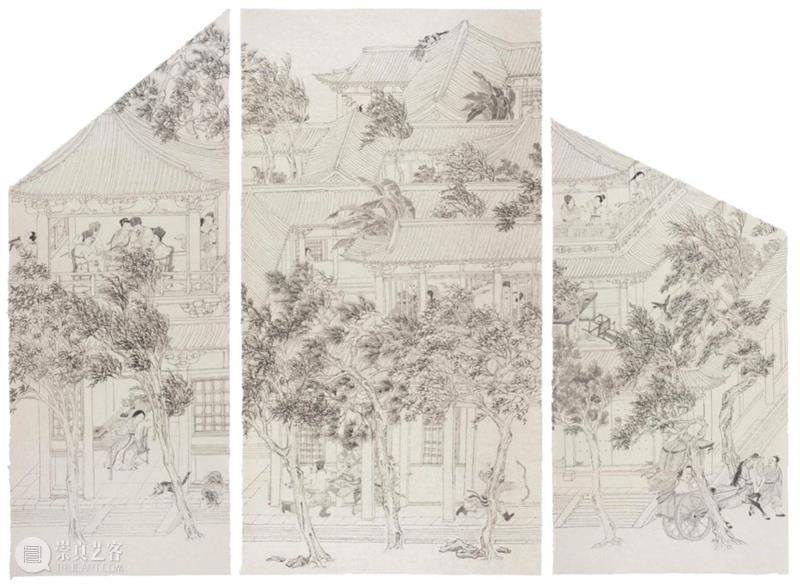
彭薇 Peng Wei|七個夜晚:第二夜 Seven Nights: The Second Night|2018 | 水墨.麻纸 Ink on flax paper|145 x 192.5 cm
总长达五十米的《故事新编》将吕坤《闺范》一书中表达女德的形象,使用大尺幅的写意笔法,在去除背景与情节的状况下,将她们的姿态跃于纸上,使其身体作为观看的焦点;《梦中人》系列作品,则取材自中国传统故事中的女鬼形象。在失去前后文的状况下,画面的重点转为幽灵的现形──女性的现形成为事件自身,透过西方作家的书信与图像的并置,重新对迭失资讯的身体补充内容。彭薇试着藉由《七个夜晚》提出一种可能性:将自身陌化的同时又保持着一定的主动性,如万花筒般在两个自己间无限镜射,凹折出错接、并容大量叙事可能的世界。《七个夜晚》作品共分为七组,每一组除了描绘如梦境般的院落中发生的故事,歪斜缩放的画作外框,除了回应画作中的建筑院落外,亦形成某种三维错视,仿若跟着不可见的建筑外墙凹曲透视;《窥》的系列,则由《七个夜晚》再次撷取了局部进行发挥:将空间中的叙事集合进行挑选,独立出来表达;《Hi-Ne -Ni》、《这就是她》,分别由女体纸模与无内容的欧洲小框自极端的两处出发。《Hi-Ne-Ni》女性的身体不仅是事件自身,亦是叙事发生的空间,《这就是她》则着迷于典雅的镜框,镜框自身的个性各异其趣,中间缺漏的空间似乎等待着一张特别的画作:这些特别的画作,各自差异,标示了女性空间的感性。
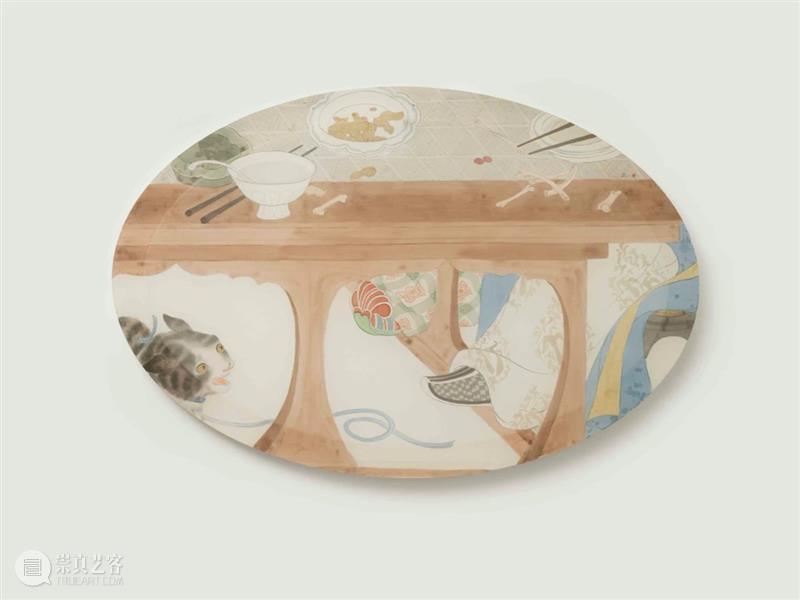
彭薇 Peng Wei|窥-18 Peek–18|2019 | 水墨.绢 Ink on silk|50 x 75 cm
在彭薇此次个展中,观众看到的将不只是艺术家对水墨图象的运用,更看见艺术家如何思考女性。与此同时,艺术家对女性的思辨,以及相异题材中女性的关注、表达,也强化了女性的视角。这视角并非单纯的遥望、浏览,而是挟带着强烈意志之凝视,仿若要将书本看穿,将画笔刺进纸绢的皮下组织直达髓骨。在这样的凝视中(女性的凝视),除了将叙事的主导权重掌于女性,也提示在现今世界中「女性美学」的另一种想像。
延伸阅读:
这个展览对我来说有一种特殊的兴趣,也有一种特殊的审美触感。我在两年前发表出版了一本书《中国绘画中的“女性空间”》,重新反思美术中对“女性空间”是怎么表达的,这本书讲述的是关于古代女性空间的绘画表现。我看到了彭薇女士的几组作品都与女性空间有关,所以,我建议用“女性空间”作为展览的名字。(巫鸿)
GDMoA公共教育,公众号:广东美术馆公共教育云导览|彭薇:女性空间
7个系列的作品,其实就是想叙述女性在社会生活中的一些困境、纠结和痛苦。它们可能来自我自己的经历,也是我对周围和历史上一些女性共同命运的体验。
点击右边星标,公众号:一条46岁神仙姐姐,一个人在50米长卷上作画,美到忘了呼吸
---
Peng Wei: Feminine Space Exhibition
Dates │ 12.05.2020–01.30.2021
Reception │ 12.05.2020 (Sat.) 4:30 p.m.
Venue │ Tina Keng Gallery (B1, No. 15, Ln. 548, Ruiguang Rd., Neihu Dist., Taipei, Taiwan 11492)
One of the prominent contemporary artists in China, Peng Wei is known for her paintings of landscapes and Taihu rocks, of Western faces rendered in Asian mediums, of delicate embroidered shoes and robes. Through her meticulous brushwork and application of ink across flax paper, cotton paper, or silk, an abiding spirit of centuries-long tradition enlaces her contemporary interpretation. The artist examines Chinese culture through a rigorous scrutiny of literati imagery that has in recent years gravitated toward femininity in a dialectical approach to gender and culture.
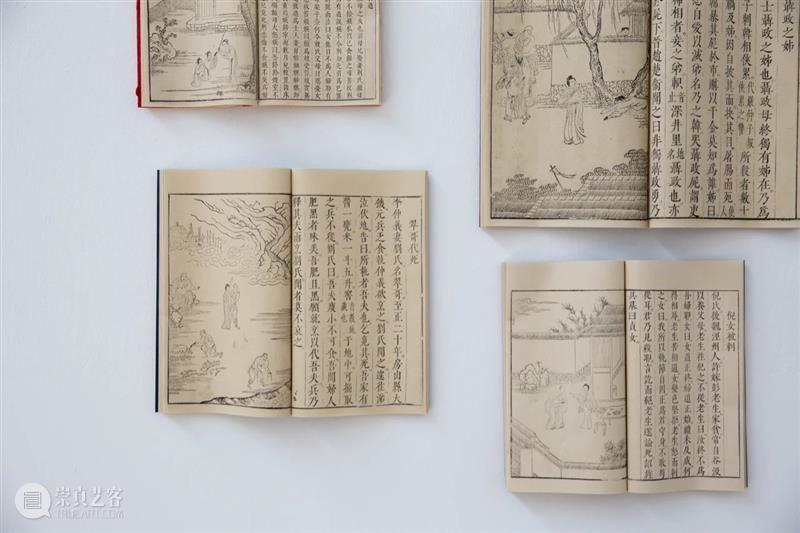
彭薇 Peng Wei|闺范 Handbook for the Boudoir|2019 | 数码打印 Digital print|20本 20 copies
The image of the female in different ancient Chinese narratives elicits a foreign feeling in Peng Wei that disaccords with her idea of women. Stunned, confused, and bewildered, she finds the portrayal of the female — whether the exemplars in Paragons of Feminine Virtue by Ming-dynasty thinker Lv Kun, or the fox spirits and female ghosts in Strange Tales from the Chinese Studio by Qing-dynasty novelist Pu Songling — to be indistinguishable products of the male gaze that could be anonymously reproduced to reinforce patriarchal values. Peng Wei isolates these images from their original contexts, and transforms them into new narratives where the posture and the body of these women educes a strange feeling that becomes tacitly amplified. The body of these women reemerges as a new tale, or a spectacle in and of itself. The dissimilitude, misappropriation, and vacancy among these images of women create interstices which the artist adroitly leverages into a singular, feminine space by recontexualizing the parables or spectacularizing gender.
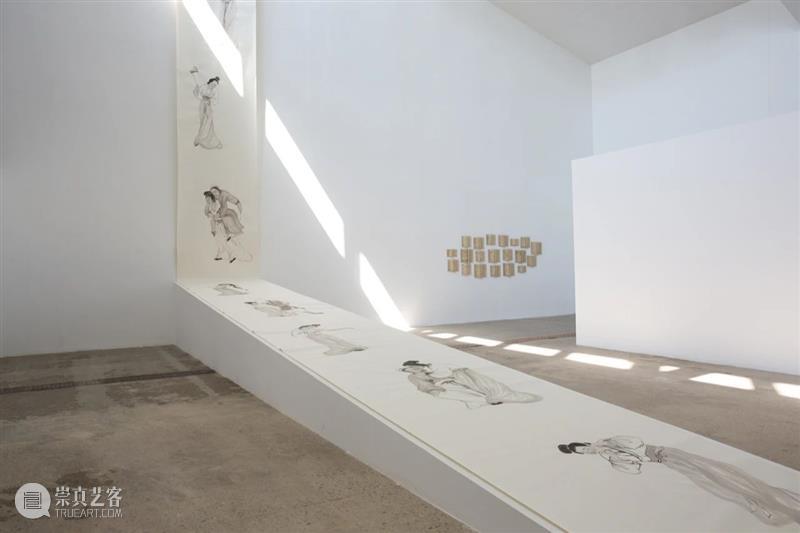
彭薇 Peng Wei|故事新编 Old Tales Retold|2019 | 水墨.纸本 Ink on paper|5,000 x 160 cm
The 50-meter-long Old Tales Retold (2019) decontextualizes the exemplars from Ming-dynasty thinker Lv Kun’s Paragons of Feminine Virtue through freehand brushwork that brings these women to life, highlighting the female body. “The One in My Dreams” series (2020) is inspired by female ghosts from Chinese folklore. Disengaged from the original context, the painting is centered on the manifestation of the ghostly spirit — the female apparition turns into a spectacle. The juxtaposition of the imagery and Western authors’ letters embodies the artist’s attempt to recontextualize the disoriented persona.
By simultaneously distancing herself and retaining her agency, the artist conjures a kaleidoscopic microcosm of narrative possibilities in the “Seven Nights” series. The series consists of seven sets, each a portrayal of a courtyard and the events that went on therein which she once saw in her dreams. The skewed and scaled contours of the painting not only echo the architecture in the courtyard, but also evoke a three-dimensional illusion that allows the viewer to see past the invisible façade of the buildings. Inspired by “Seven Nights,” the “Peek” series attests the artist’s scrutiny of details, where carefully selected narratives are ingeniously magnified.
The “Hi-Ne-Ni” and “This Is Her” series represent two ends on Peng Wei’s artistic spectrum. The former comprises paper-plastered female mannequin busts, the latter a constellation of small paintings in European antique mirror frames. The female body in “Hi-Ne-Ni” morphs into a spectacle as much as an eventful space where inscrutable tales unfold, while “This Is Her” exudes a charm that permeates each delicate mirror frame — once vacant, awaiting a special painting: Peng Wei fills these frames with unique works that navigate feminine sensibility.
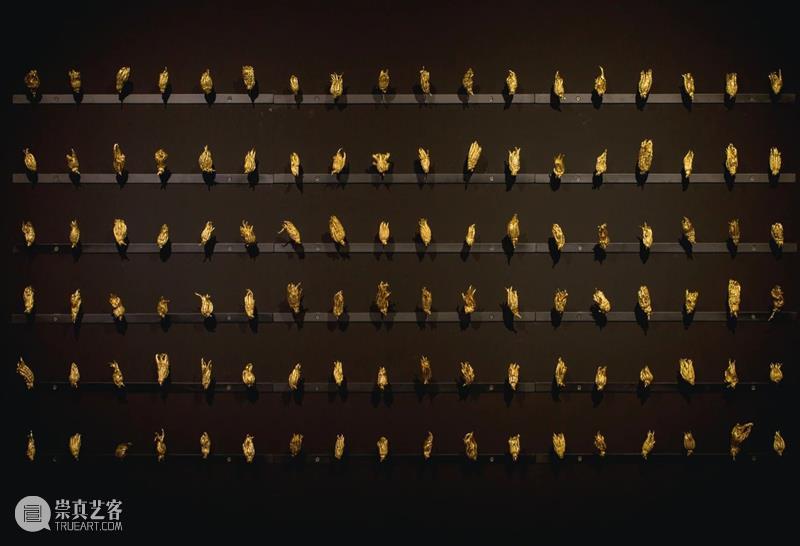
彭薇 Peng Wei|器世间 Material World|2017–2019 | 水墨.纸本 Ink on paper|108个佛手.金箔.视频 108 Buddha’s hands, gold foil, and video
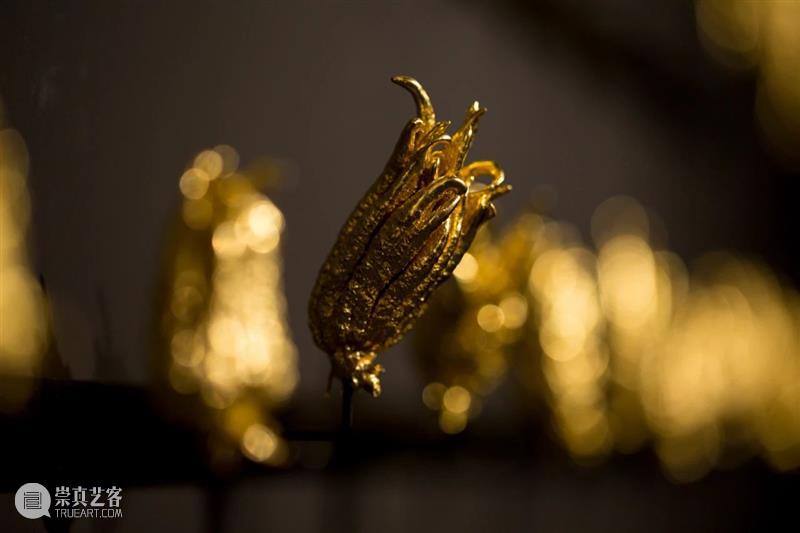
彭薇 Peng Wei|器世间 Material World|局部 detail
Feminine Space serves as a chance for the viewer to see not merely the artist’s sophisticated application of ink, but also her perspective on femininity. Peng Wei’s contemplation on what it means to be female, as well as her depiction of women rendered in varying mediums also privileges the female vantage point. Her stance is less an insouciant look from afar than an earnest gaze that pierces through the ancient works of Chinese literature, as she wields her paintbrush adamantly across the paper. This feminine gaze ultimately returns the prerogative of narrative to women, at the same time, hinting at another way to reimagine feminine aesthetics in contemporary society.
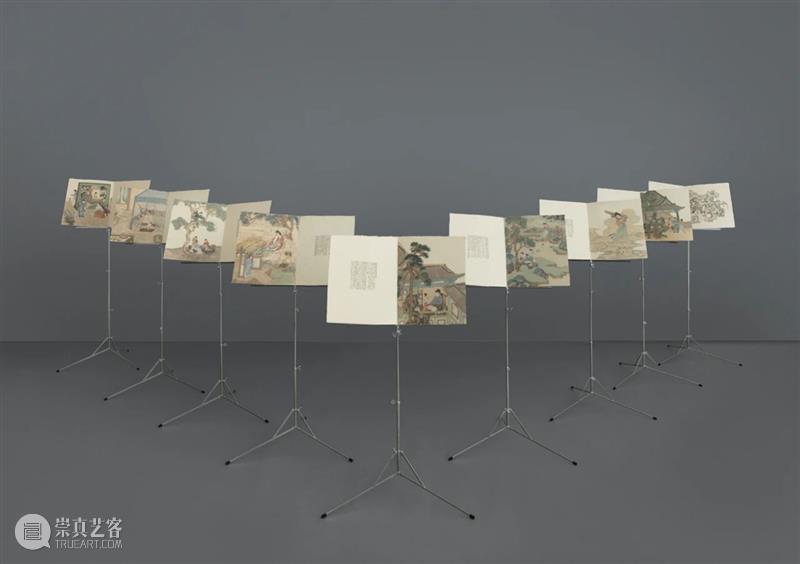
彭薇 Peng Wei|梦中人 The One in My Dreams|2020 | 水墨.麻纸 Ink on flax paper|60 x 38 cm x 9張
更多信息请密切关注耿画廊公众微信
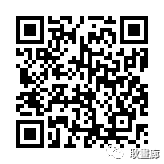
▼
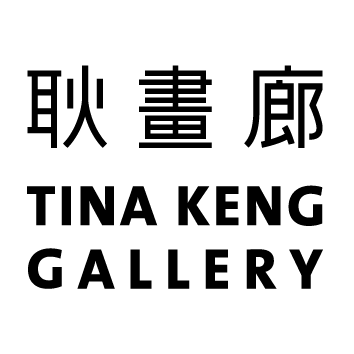
台北市内湖区瑞光路548巷15号1楼
1F, No.15. Ln.548, Ruiguang Rd.,
Neihu Dist, Taipei 114, Taiwan
T. +886.2.2659.0798
F. +886.2.2659.0698
info@tinakenggallery.com
Opening Hours
Tuesday - Saturday :11:00 am - 7:00 pm
Sunday & Monday Closed


已展示全部
更多功能等你开启...





 分享
分享